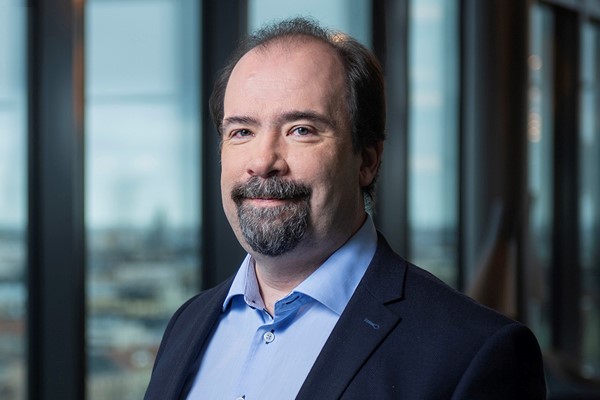Do Finnish product development and sustainability go hand in hand? The short answer is yes, especially when it comes to systems manufactured by Hedengren Security. The company’s product managers explain the values and operating models behind Finland’s most durable and energy-efficient security systems.
The market’s most energy-efficient emergency lights, Finland’s most sustainable high-security burglar alarm system, the industry’s most material-efficient fire safety lighting system – over the decades, Hedengren Security’s state-of-the-art security systems have achieved many accolades as proof of their durability and our responsible approach to everything we do.
According to Hedengren Security’s fire and emergency lighting product group manager Peter Malmelin, the secret to these groundbreaking products lies not only in the fact that they are designed and manufactured in Finland.
“Even Nordic manufacturing can be done irresponsibly. However, for us, Nordic origin, in this case Finnish origin, is the foundation for ethical and sustainable product development. It means having a complete understanding of the products and subcontractors, transparency in processes, being close to the customer, and continuous product improvement.”

Our Nordic heritage provides security for every client
According to Malmelin, Finnish origin is a significant security factor for customers. The journey to the manufacturer is extremely short. Expert support is available throughout the product’s lifespan, and there is no need to look through lists of brand names and subcontractor chains for spare parts, warranty matters or anything else.
“There’s a big difference between investing in an innovation made by a company that’s a couple of years old, and choosing a system from Hedengren, which has been engaged in innovative and customer-oriented product development for over 100 years,” says Malmelin.
Hedengren Security’s product manager for burglary alarms, Jukka Routtu, emphasises that Finnish product development requires continuous monitoring.
“We regularly carry out tests to ensure that all system components meet the original requirements. For example, on occasion there has been a shortage of intelligent memory components, which can pose a risk of counterfeit products appearing on the market.”

Technology with a long lifespan
As Routtu sees it, in addition to being carried out in Finland responsible product development relies on a long lifespan goal.
“Our design principle is always maximum durability. The minimum lifespan of our products is 10 to 15 years. Our product ranges are designed to be backward- and forward-compatible, so that systems can be updated as software or parts age without the need for a complete replacement.”
Innovations are also thought through carefully in order to make use of existing equipment as much as possible.
“For example, with the HHL system, we will soon introduce a software solution that can integrate older and newer generations,” Routtu says.

Malmelin says that a responsible approach also includes advising customers to make use of older-generation systems where appropriate and not selling them the latest innovation just to make a sale.
“For instance, within a property there might be areas where equipment gets dirtier and wears out more. Such equipment can be easily replaced with suitable devices from previous models, even if newer models are on the market.”
Energy efficiency generates savings
An increasingly important measure of responsibility for customers is energy efficiency. It brings significant economic savings in the case of large projects in particular. For instance, energy consumption can be reduced by up to 90 per cent compared to traditional LED lighting systems with the FIREscape integrated system or Neptolux emergency lights, the most energy-efficient lights on the market.

According to Routtu, energy efficiency is above all a significant safety factor. During power outages, security systems that safeguard life and property must operate solely on their own energy reserves. For instance, intrusion detection devices might be required to function for up to 60 hours during power disruptions.
“We invest a lot of time in dimensioning transformers and power supplies, minimising waste heat and optimising energy efficiency. This ensures that battery sizes remain moderate and the devices provide the best possible energy efficiency in every situation.”
Integration minimises the amount of devices needed and the workload
Material efficiency is also a measure of responsibility. When systems are designed for integration, fewer devices and cables are needed. At the same time, the amount of data collected by interconnected systems increases and the carbon footprint of production decreases.
“We have opened up the interfaces of our security systems to third parties as well, so customers can use the data they collect with the help of other partners or technologies,” says Malmelin.

Behind this is a firm belief that development is at its best when there is collaboration with other companies in the industry as well as with customers.
“When we understand both the customer’s and the industry’s needs, we can meet them in the best possible way. At the same time, we can create new, sustainable practices and promote a responsible approach across the entire industry,” Malmelin says.
Read more about the Finnish Key Flag symbol and the criteria for granting it >>